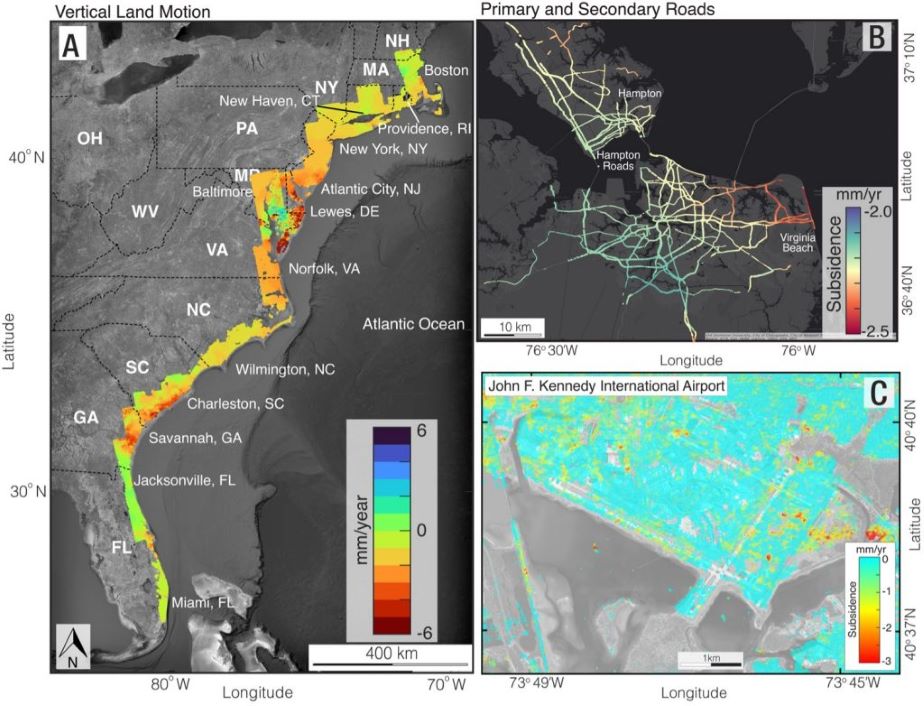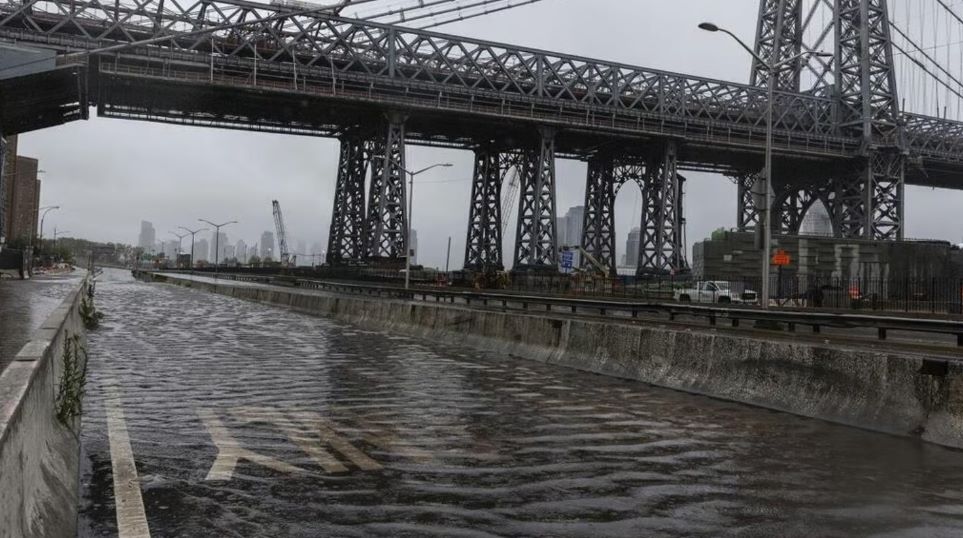The United States east coast is sinking rapidly
The eastern coast of the United States, where population density is higher than in other parts of the country, has been succumbing to the Atlantic Ocean at a pace between 1 and 2 millimeters a year.
This is quite a fast speed by geological standards, according to a new study conducted by researchers at Virginia Tech and the U.S. Geological Survey and published in early January this year in the journal Proceedings of the National Academies of Sciences Nexus.

Yellow and red colors show the areas affected by subsidence. Credit: Virginia Tech via NASA
The groundbreaking findings emerged after the mapping of satellite images taken by the National Aeronautics and Space Administration from space. The authors note in a statement that in the case of several major cities along the eastern coast the sinking pace is 5 millimeters annually.
“Particularly hard hit population centers such as New York City and Long Island, Baltimore, and Virginia Beach and Norfolk are seeing areas of rapid “subsidence,” or sinking land, alongside more slowly sinking or relatively stable ground, increasing the risk to roadways, runways, building foundations, rail lines, and pipelines,” the statement reads.
More to read:
[video] Remember Doomsday Glacier? A robot filmed trouble under it
In several cities along the East Coast, multiple critical infrastructures such as roads, railways, airports, and levees are affected by differing subsidence rates.
“The problem is not just that the land is sinking. The problem is that the hotspots of sinking land intersect directly with population and infrastructure hubs,” says Leonard Ohenhen, the lead author. “For example, significant areas of critical infrastructure in New York, including JFK and LaGuardia airports and its runways, along with the railway systems, are affected by subsidence rates exceeding 2 millimeters per year. The effects of these right now and into the future are potential damage to infrastructure and increased flood risks."
More to read:
Africa is splitting to form a new ocean
The research predicts that more than 2 million people and over 800,000 properties will be affected and called on authorities to mitigate the immediate threats of subsidence (the scientific term for the caving-in or sinking of land) and to address the climate change issue seriously.

Flooding in New York City. Credit: AP
An earlier study published by the California Institute of Technology in September 2023 says that the New York City metro area was sinking at a rate of 1.5 millimeters per year.
The January 2023 study shows this pace is now a whole 2 millimeters.
New York City is not going to be swallowed by the ocean waters anytime soon, but if the pace of subsidence accelerates, it might become a new Venice during our lifetime.
According to NASA, the planet’s glaciers are predicted to lose some 40% of their mass and contribute 9 centimeters to sea level rise by the year 2100, affecting not just America, but all continents.
***
Care to buy us a coffee? Do it via PalPal: office[at]rudeana.com. Thank you.




![[video] Trump just slapped penguins on Antarctic islands with tariffs](/news_img/2025/04/03/news0_mediu.jpg)


